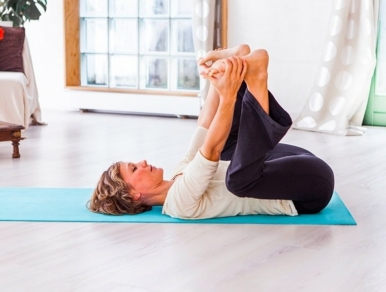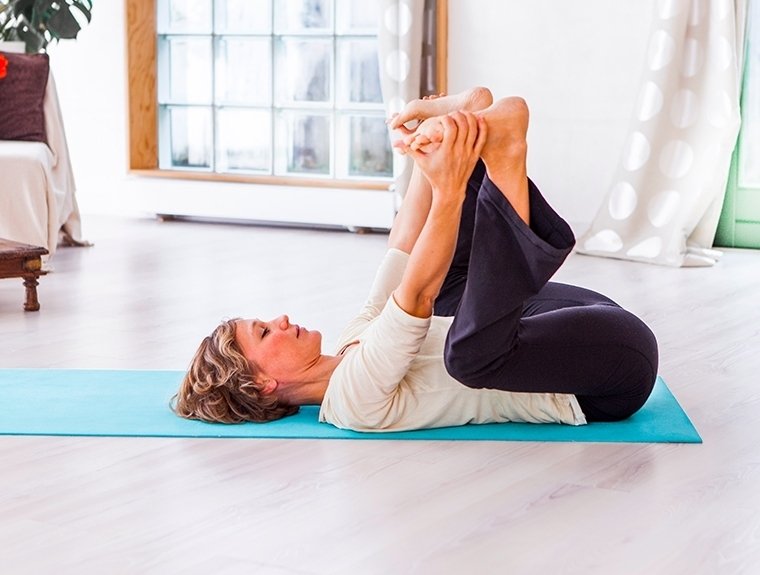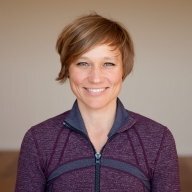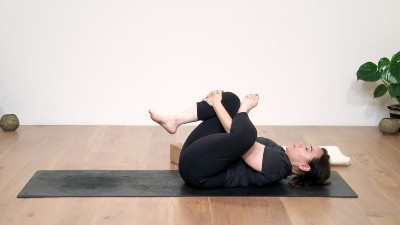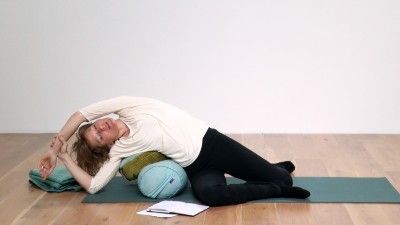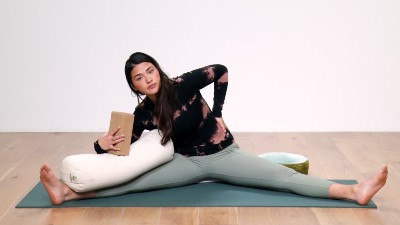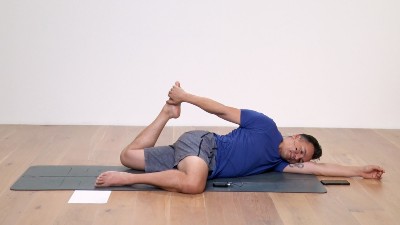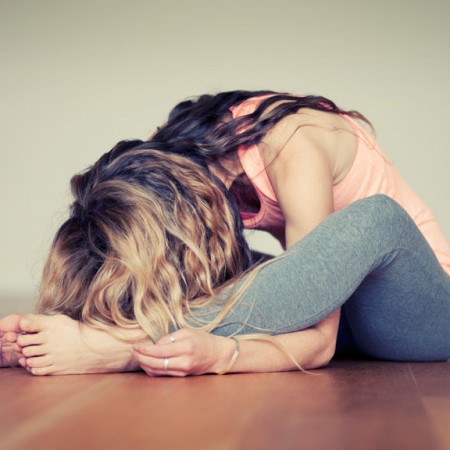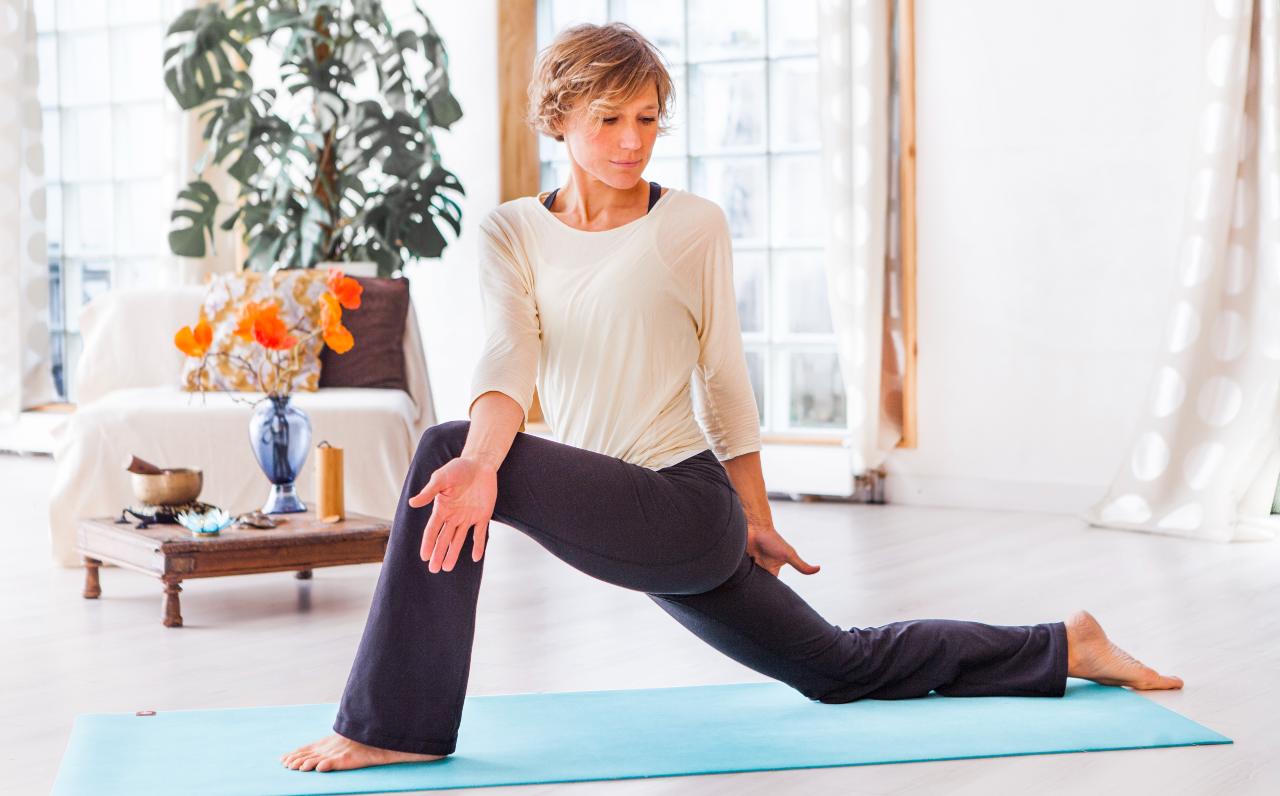Yin yoga works deeply into our body with passive, longer-held poses.
It targets the deepest tissues of the body, our connective tissues – ligaments, joints, bones, the deep fascia networks of the body and the meridians. This is contrast to a Yang yoga practice such as Vinyasa yoga which targets the muscles.
Energetically, Yin yoga improves the energy flow, enhancing the flow of chi in the organs. To be healthy, we need healthy organs as well as healthy muscles. Yin yoga also offers wonderful emotional and mental health benefits.
What to expect in a typical Yin yoga class
A Yin yoga class usually consists of a series of long-held, passive floor poses that mainly work the lower part of the body – the hips, pelvis, inner thighs, lower spine. These areas are especially rich in connective tissues. The poses are held for up to five minutes, sometimes longer. Yin is almost entirely passive, although some Yin asanas contain Yang elements. During the asanas, muscles are relaxed to avoid muscle spasm, which could result from engaging muscles for long periods.
Benefits of a regular practice
- Increases circulation and improves flexibility
- Calms and balances the mind and body
- Reduces stress and anxiety
- Releases fascia
- Encourages deeper relaxation
- Improves joint mobility
- Brings balance to the organs through meridian stimulation
Origins and History
Holding stretches for long periods of time and other techniques closely related to Yin yoga have been practised for centuries in China and Taiwan as part of Daoist Yoga, which is sometimes known as Dao Yin. Taoist priests taught this knowledge, along with breathing techniques, to Kung Fu practitioners around 2000 years ago.
Philosophy and Principles of Yin Yoga
Yin and Yang
Yin yoga is based on the Taoist concept of yin and yang, opposite and complementary principles in nature. Yin is the stable, unmoving, hidden aspect of things; yang is the changing, moving, revealing aspect. In the body, the relatively stiff connective tissues (tendons, ligaments, fascia) are yin, while the more mobile and pliable muscles and blood are yang.
It works on the Yin tissues – also known as the connective tissues. Connective tissue responds best to a slow, steady load. If you gently stretch connective tissue by holding a yin pose for a long time, the body will respond by making them a little longer and stronger – which is exactly what you want. Remember the principle of the exercise is to stress the tissue so the body will respond by strengthening it.
Yin Yoga requires the muscles to relax around the connective tissue in order to get a stretch, so not all yoga poses can be done safely or effectively when practising Yin style. Thus Yin asanas have different names.
Qi
Yin yoga poses are also designed to improve the flow of qi (or chi) the subtle energy that, according to Traditional Chinese Medicine (TCM), runs through the meridian pathways of the body. According to TCM, the improved flow of qi improves organ health, immunity, and emotional wellbeing.
Four main principles to remember when practicing Yin yoga:
- Find an appropriate edge: Move slowly and gently into the pose, and look for an appropriate amount of intensity, never stretch so far as to cause pain.
- Stillness: consciously try to release into the pose, and to remain still, without shifting position.
- Hold the position: begin by holding for 1-3 minutes gradually progressing to 5 minutes or more.
- Come out of the pose gently and slowly.
Learn more
- Yin yoga pose gallery – step by step instructions for Yin yoga poses, plus variations, beginners’ tips and suggested classes.
- Benefits of Yin yoga – learn why this style of yoga has such a positive impact on your mental, physical and emotional health.

